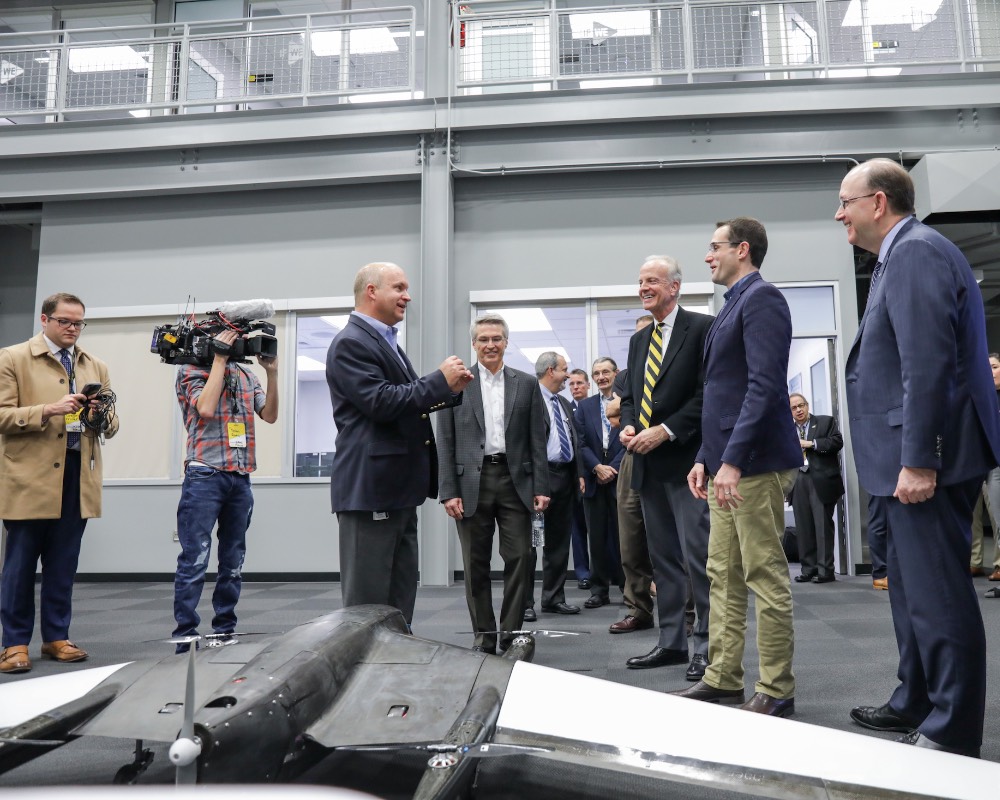The U.S military needs a source of spare parts to keeps its aging aircraft flying. Wichita State University is rapidly establishing a database and acting as an essential connector for those requests.
The National Institute for Aviation Research’s unique capabilities make it qualified to help with the teardown, digitizing and cataloguing of parts. That process saves the military time and money, which keeps its aircraft and other vehicles prepared.
“The military is in need of sustainment and readiness,” said John Tomblin, WSU vice president for research and economic development. “Imagine you have an aircraft that was built 30-plus years ago and you need replacement parts for it, but it’s out of production. It can take up to two years to get parts, and costs can come at a premium due to low part count.”
Wichita State and NIAR are working to shorten that timeline and reduce the cost by turning parts and blueprints into digital files that can quickly be delivered to manufacturers.
“We’re a library of parts,” said Chris Rempe, NIAR Reverse Engineering and Additive Manufacturing lab manager. “If someone says we need this part number out there, we can say ‘OK, we have that part.’”
In September 2018, the General Accounting Office looked at five Air Force and seven Navy planes from 2011-2016. Nine of the 12 fixed-wing aircraft, according to the report, failed availability goals.
“The Air Force and Navy share a variety of sustainment challenges, including the age of their aircraft as well as maintenance and supply support issues,” according to the report. “The Departments of the Air Force and Navy spend tens of billions of dollars each year to sustain their fixed-wing aircraft, which need expensive logistics support, including maintenance and repair, to meet goals for availability.”
The three-step process begins at NIAR’s Aircraft Structural Test & Evaluation Center, where aircraft are torn down and catalogued, scanned and digitized part-by-part.
Parts are then taken to Wichita State’s John Bardo Center for 3D scanning.
“We’re very accurately scanning every single component,” Rempe said. “As we model these components, they’re being assembled into a digital format where engineers can now work on the entire format, make sure everything fits the way it’s supposed to, compare it back to drawings and, eventually, get a new master model of the aircraft or vehicles that never existed before.”
The process turns decades-old line drawings into digital files. Comparing a part from different aircraft accounts for changes made over the years that weren’t updated in original drawings
“These older aircraft only have line drawings,” Tomblin said. “Typically, the department submits a stack of drawings that is put on the open market for bid, but no one will bid on it. One of the key things that Wichita State is doing, with our partners here on the Innovation Campus like Hexagon and Dassault, are taking those older aircraft with line and blueprint drawings, and transforming them into a digital age.”
In recent weeks, Lt. Gen. L. Neil Thurgood from the U.S. Army Rapid Capabilities and Critical Technologies Office, Air Force Under Secretary Matthew Donovan and Air Force Assistant Secretary for Acquisitions, Technology and Logistics Will Roper visited campus for discussions and tours of NIAR laboratories.
In June, The U.S. Air Force Research Laboratory awarded NIAR a $23.5 million contract for modeling composite inspection and repair techniques for aircraft in active service.


 File photo
File photo